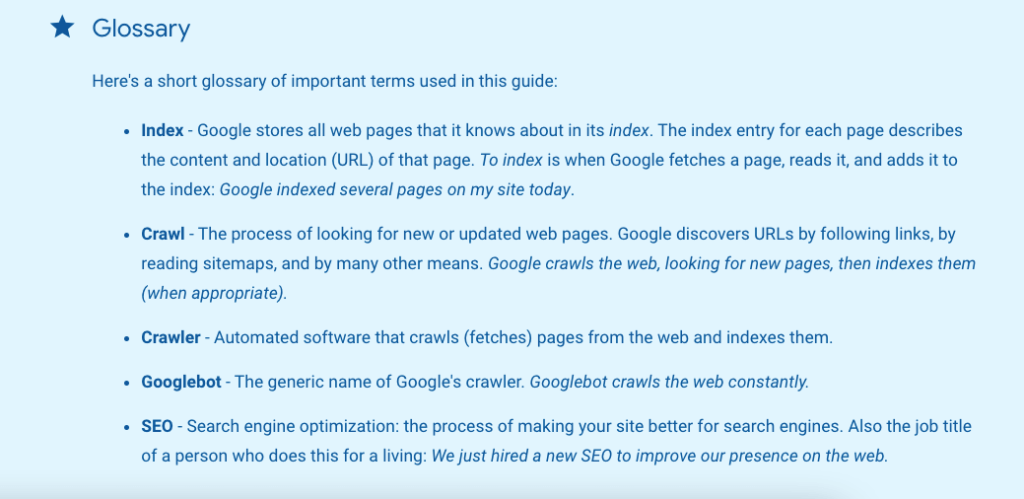Unleash the power of persuasive language and SEO strategies to create product descriptions that drive conversions and boost sales!

Image courtesy of via DALL-E 3
Table of Contents
Introduction to SEO Product Descriptions
In today’s digital world, getting your products noticed online can be a challenge. That’s where SEO comes in to save the day! SEO, which stands for Search Engine Optimization, is like using special words to help people find things online easily. It’s a superpower that can make your products stand out in a crowded marketplace.
What is SEO?
SEO is like having a secret code that helps search engines like Google understand what your product is all about. By using the right keywords in your product descriptions, you can increase the chances of your products showing up when people search for them online. It’s like having a magic key that unlocks a treasure trove of potential customers!
Why Product Descriptions Matter
Imagine walking into a store with blank shelves and no labels on the products. How would you know what you’re buying? Product descriptions are like little stories that help customers understand what a product is, what it does, and why they need it. Good descriptions can make your products sound exciting and can motivate people to hit that “buy now” button!
Researching Keywords
When writing product descriptions for online platforms, one crucial aspect to consider is choosing the right words that people are searching for. This process is known as keyword research, and it plays a significant role in optimizing your content to reach a wider audience.
Using Keyword Tools
Keyword tools are like treasure maps that help you discover the most popular words people use when looking for products online. One popular tool is the Google Keyword Planner, which provides insights into search volumes and competition for specific keywords. By using these tools, you can tailor your product descriptions to include terms that are frequently searched, increasing the chances of your products being found by potential customers.
Understanding Competition
It’s essential to know which keywords your competitors are using to describe similar products. By understanding the competitive landscape, you can identify opportunities to stand out by choosing different or more specific keywords. This differentiation can help attract a unique audience to your product, increasing the likelihood of converting visitors into customers.
Writing Clear and Interesting Descriptions
When it comes to writing product descriptions, using simple language is key. Simple language means using words that everyone can easily understand. Instead of big, complicated words, try using short and clear phrases to describe the product. By using straightforward language, more people will be able to comprehend what you’re saying about the product.

Image courtesy of seowithram.com via Google Images
Using Simple Language
To make your product descriptions easy to read, avoid using complex words that might confuse readers. For instance, instead of saying “This revolutionary technological innovation boasts unparalleled sophistication,” you could simply say, “This new gadget is very smart and advanced.” By opting for simpler language, you ensure that even younger readers or those with less experience can grasp the essence of your product without any difficulty.
Making It Fun and Engaging
To make your descriptions more interesting, consider adding some fun elements. You can incorporate stories about the product, interesting facts, or even jokes to engage the reader. For example, if you’re describing a toy car, you might talk about how fast it zooms around the room or mention a funny adventure the toy has been on. By adding these engaging elements, you can make your product descriptions more entertaining and memorable, which can ultimately lead to more sales.
Including Important Information
When writing a product description, it’s crucial to include a list of the features that make the product unique. Features are the specific characteristics or functionalities of the product that set it apart from others. For example, if you’re selling a smartphone, you might want to highlight features like the size of the screen, the quality of the camera, or the amount of storage space it has. By listing these features, you give potential customers a clear idea of what the product is all about.
Describing Benefits
While features are important, it’s equally essential to describe the benefits that the product offers to the customer. Benefits are the ways in which the product can improve the customer’s life or solve a problem they have. For instance, if you’re selling a high-quality blender, you might emphasize the benefit of being able to make smoothies quickly and easily. By focusing on benefits, you show customers how the product can enhance their daily routine or make their lives better.
Using Visual Elements
When creating product descriptions, it’s essential to include eye-catching images. Images help people see what the product looks like and can make them more interested in buying it. Good pictures can show the color, size, and shape of the product, giving shoppers a clear idea of what to expect. It’s like showing a sneak peek of the product before they decide to purchase it.

Image courtesy of moosend.com via Google Images
Creating Videos
Another fantastic way to enhance your product descriptions is by incorporating videos. Videos can bring the product to life by demonstrating how it works and showcasing its features in action. By watching a video, potential buyers can get a better understanding of the product’s benefits and imagine themselves using it. This visual representation helps create a connection with the product and can increase the likelihood of a purchase.
Optimizing for Different Devices
When creating product descriptions, it’s crucial to consider how they will look on various devices like mobile phones, tablets, and computers. People use different devices to shop online, so it’s essential that your descriptions appear attractive and accessible no matter the screen size.
Ensuring Mobile Friendliness
Mobile phones are one of the most popular devices for online shopping. Therefore, it’s important to make sure that your product descriptions are easy to read on smaller screens. Use short sentences, bullet points, and clear images to make the content digestible for mobile users.
Using Responsive Design
Responsive design is a technique that ensures your product descriptions adapt to the screen size of the device being used. This means that your descriptions will look great on any device, whether it’s a smartphone, tablet, or computer. By using responsive design, you can provide a seamless shopping experience for all your customers.
Testing and Improving Descriptions
In the world of online shopping, having great product descriptions is essential to capturing the attention of potential buyers. However, it’s not just about writing any description; it’s about creating descriptions that work well and make people want to buy your product. In this section, we’ll explore how you can test and improve your descriptions to ensure they are effective in converting browsers into buyers.

Image courtesy of www.webfx.com via Google Images
Getting Feedback
One of the best ways to know if your product descriptions are hitting the mark is by getting feedback from others. This could be from friends, family, or even potential customers. Ask them to read through your descriptions and provide honest feedback on what they liked, what could be improved, and whether the description made them want to purchase the product. Constructive criticism can help you identify areas for improvement and make your descriptions more persuasive.
Trying Different Versions
Another effective way to test and improve your product descriptions is by conducting A/B testing. This method involves creating two different versions of a product description and showing each version to a different group of people. By analyzing which version leads to more conversions or engagements, you can determine which description is more effective. This valuable insight allows you to refine your descriptions further and optimize them for better results.
Monitoring Performance
After you’ve crafted your SEO product descriptions, it’s essential to keep an eye on how they’re performing. Monitoring the performance of your descriptions can help you understand if they’re helping to sell products and if there are areas that need improvement.
Using Analytics Tools
To track the success of your product descriptions, you can use tools like Google Analytics. These tools can provide valuable insights into how many people are reading your descriptions, how long they’re spending on the page, and even if they’re clicking on the “buy” button.
Adjusting Based on Data
Once you have data from analytics tools, it’s crucial to analyze it and make adjustments to your product descriptions accordingly. If you notice that certain descriptions aren’t performing well, you can tweak them to be more engaging or informative. By continuously monitoring and adjusting based on data, you can ensure that your product descriptions are optimized for success.
Conclusion
Writing great product descriptions that are SEO-friendly can make a big difference in how well your products sell online. By following the tips outlined in this blog post, you can create descriptions that catch the eye of potential customers and convince them to make a purchase.

Image courtesy of moosend.com via Google Images
Recap of Key Points
Remember, SEO stands for Search Engine Optimization, which means using special words to help people find things online. Product descriptions are important because they provide clear information and make products sound exciting. When writing descriptions, use tools like Google Keyword Planner to find popular words, and make sure your descriptions are easy to read and engaging.
Final Tips for Success
As a final reminder, always include important details, features, and benefits in your descriptions. Use visual elements like images and videos to make your products more appealing. Ensure your descriptions look good on all devices and test different versions to see which works best. Monitor your performance using tools like Google Analytics and adjust your descriptions based on data.
Want to turn these SEO insights into real results? Seorocket is an all-in-one AI SEO solution that uses the power of AI to analyze your competition and craft high-ranking content.
Seorocket offers a suite of powerful tools, including a Keyword Researcher to find the most profitable keywords, an AI Writer to generate unique and Google-friendly content, and an Automatic Publisher to schedule and publish your content directly to your website. Plus, you’ll get real-time performance tracking so you can see exactly what’s working and make adjustments as needed.
Stop just reading about SEO – take action with Seorocket and skyrocket your search rankings today. Sign up for a free trial and see the difference Seorocket can make for your website!
Frequently Asked Questions (FAQs)
What if I can’t find good keywords?
If you’re having trouble finding good keywords for your product descriptions, don’t worry! You can try brainstorming words that you think people might use to search for your product. Ask friends and family what words they would use to find a product like yours. Additionally, you can look at similar products online and see what keywords they are using. Remember, the key is to think about the words your potential customers would type into a search engine to find your product.
How long should a product description be?
The ideal length for a product description can vary, but it’s generally a good idea to keep it concise and to the point. Most experts recommend around 150-300 words for a product description. You want to include enough information to help customers understand what the product is and why they should buy it, but you also want to keep it short enough that they don’t lose interest. Remember, quality is more important than quantity, so focus on conveying the most important details about your product in a clear and engaging way.







